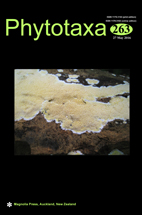Abstract
A new species of Epimedium L. (Berberidaceae), E. xichangense Y. J. Zhang, is described and illustrated from Xichang, Sichuan Province, China. E. xichangense has large flower with petals bearing long spurs and obvious basal lamina, and should be a member of ser. Davidianae. The species is easily distinguished from other species of ser. Davidianae by its compact rhizome, leaflet number and morphology, leaf number and arrangement on the flowering stem, flower color, and shape and size of inner sepal and petal. Epimedium xichangense is most similar to E. elongatum of ser. Dolichocerae in morphology, but they can be differentiated clearly by the flower and rhizome characters.

